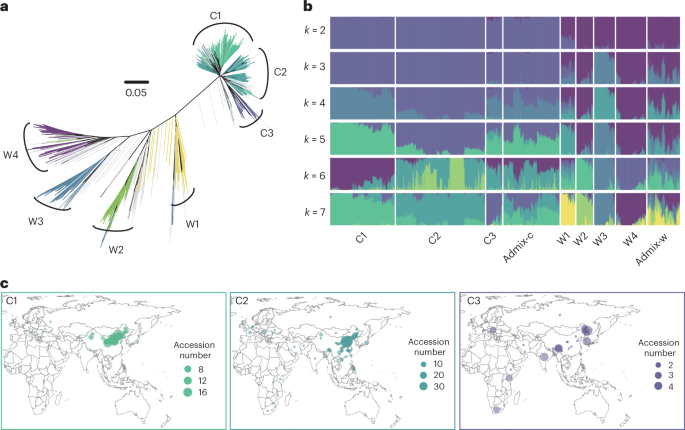2023-06-08 ノースカロライナ州立大学(NCState)
◆国際的な科学者チームによるこの発見は、人間の足跡が動物に与える影響が物理的なインフラストラクチャーに限定されないことを示しています。この研究は、人間活動の低減による「人類休止」が哺乳類にどのように影響を与えたかを全体像で伝えるために行われました。研究者たちは、世界中の2,300の個体動物のGPS追跡データを使用し、2020年のロックダウン期間中の動きと1年前の同じ期間の動きを比較しました。研究結果は、動物の行動に対する示唆についても明らかにしています。
<関連情報>
- https://news.ncsu.edu/2023/06/during-anthropause-animals-moved-more-freely/
- https://www.science.org/doi/10.1126/science.abo6499
COVID-19のロックダウンに対する陸生哺乳類の行動学的反応 Behavioral responses of terrestrial mammals to COVID-19 lockdowns
Marlee A. Tucker* ,Aafke M. Schipper ,Tempe S. F. Adams,Nina Attias ,Tal Avgar ,Natarsha L. Babic ,Kristin J. Barker ,Guillaume Bastille-Rousseau ,Dominik M. Behr ,Jerrold L. Belant,Dean E. Beyer Jr.,Niels Blaum ,J. David Blount ,Dirk Bockmühl,Ricardo Luiz Pires Boulhosa ,Michael B. Brown ,Bayarbaatar Buuveibaatar ,Francesca Cagnacci ,Justin M. Calabrese ,Rok Černe,Simon Chamaillé-Jammes ,Aung Nyein Chan ,Michael J. Chase,Yannick Chaval,Yvette Chenaux-Ibrahim ,Seth G. Cherry ,Duško Ćirović ,Emrah Çoban ,Eric K. Cole ,Laura Conlee,Alyson Courtemanch ,Gabriele Cozzi ,Sarah C. Davidson ,Darren DeBloois ,Nandintsetseg Dejid ,Vickie DeNicola ,Arnaud L. J. Desbiez ,Iain Douglas-Hamilton ,David Drake,Michael Egan,Jasper A.J. Eikelboom ,William F. Fagan ,Morgan J. Farmer ,Julian Fennessy ,Shannon P. Finnegan ,Christen H. Fleming ,Bonnie Fournier,Nicholas L. Fowler ,Mariela G. Gantchoff ,Alexandre Garnier ,Benedikt Gehr ,Chris Geremia,Jacob R. Goheen ,Morgan L. Hauptfleisch ,Mark Hebblewhite ,Morten Heim ,Anne G. Hertel ,Marco Heurich ,A. J. Mark Hewison ,James Hodson ,Nicholas Hoffman,J. Grant C. Hopcraft ,Djuro Huber ,Edmund J. Isaac ,Karolina Janik ,Miloš Ježek ,Örjan Johansson ,Neil R. Jordan ,Petra Kaczensky ,Douglas N. Kamaru,Matthew J. Kauffman ,Todd M. Kautz ,Roland Kays ,Allicia P. Kelly ,Jonas Kindberg ,Miha Krofel ,Josip Kusak ,Clayton T. Lamb ,Tayler N. LaSharr,Peter Leimgruber,Horst Leitner ,Michael Lierz,John D.C. Linnell ,Purevjav Lkhagvaja ,Ryan A. Long ,José Vicente López-Bao ,Matthias-Claudio Loretto ,Pascal Marchand ,Hans Martin ,Lindsay A. Martinez ,Roy T. McBride Jr. ,Ashley A.D. McLaren ,Erling Meisingset ,Joerg Melzheimer ,Evelyn H. Merrill ,Arthur D. Middleton ,Kevin L. Monteith ,Seth A. Moore ,Bram Van Moorter ,Nicolas Morellet ,Thomas Morrison ,Rebekka Müller ,Atle Mysterud ,Michael J Noonan ,David O’Connor ,Daniel Olson,Kirk A. Olson ,Anna C. Ortega ,Federico Ossi ,Manuela Panzacchi ,Robert Patchett ,Brent R. Patterson ,Rogerio Cunha de Paula ,John Payne ,Wibke Peters ,Tyler R. Petroelje ,Benjamin J. Pitcher,Boštjan Pokorny ,Kim Poole,Hubert Potočnik ,Marie-Pier Poulin ,Robert M. Pringle ,Herbert H.T. Prins ,Nathan Ranc ,Slaven Reljić ,Benjamin Robb ,Ralf Röder ,Christer M. Rolandsen ,Christian Rutz ,Albert R. Salemgareyev,Gustaf Samelius ,Heather Sayine-Crawford ,Sarah Schooler ,Çağan H. Şekercioğlu ,Nuria Selva ,Paola Semenzato ,Agnieszka Sergiel,Koustubh Sharma ,Avery L. Shawler ,Johannes Signer ,Václav Silovský ,João Paulo Silva ,Richard Simon,Rachel A. Smiley ,Douglas W. Smith,Erling J. Solberg ,Diego Ellis-Soto,Orr Spiegel ,Jared Stabach ,Jenna Stacy-Dawes ,Daniel R. Stahler ,John Stephenson ,Cheyenne Stewart ,Olav Strand,Peter Sunde ,Nathan J. Svoboda ,Jonathan Swart,Jeffrey J. Thompson ,Katrina L. Toal,Kenneth Uiseb ,Meredith C. VanAcker ,Marianela Velilla ,Tana L. Verzuh ,Bettina Wachter ,Brittany L. Wagler ,Jesse Whittington ,Martin Wikelski ,Christopher C. Wilmers ,George Wittemyer ,Julie K. Young ,Filip Zięba,Tomasz Zwijacz-Kozica ,Mark A. J. Huijbregts ,Thomas Mueller
Science Published:8 Jun 2023
DOI:https://doi.org/10.1126/science.abo6499

Editor’s summary
Policies to reduce human movement during the early months of the COVID-19 pandemic produced a kind of natural experiment to observe how human activities affect animal behavior. Using GPS tracking data from 2300 individual mammals of 43 species, Tucker et al. documented changes in mammal movement patterns during the spring of 2020 compared with the previous year (see the Perspective by St. Clair and Raymond). In locations with strict lockdown policies, animals traveled longer distances during the lockdown period. In highly populated areas, mammals moved less frequently and were closer to roads than they were before the pandemic. These results demonstrate how human activities constrain animal movement and what happens when those activities cease. —Bianca Lopez
Abstract
COVID-19 lockdowns in early 2020 reduced human mobility, providing an opportunity to disentangle its effects on animals from those of landscape modifications. Using GPS data, we compared movements and road avoidance of 2300 terrestrial mammals (43 species) during the lockdowns to the same period in 2019. Individual responses were variable with no change in average movements or road avoidance behavior, likely due to variable lockdown conditions. However, under strict lockdowns 10-day 95th percentile displacements increased by 73%, suggesting increased landscape permeability. Animals’ 1-hour 95th percentile displacements declined by 12% and animals were 36% closer to roads in areas of high human footprint, indicating reduced avoidance during lockdowns. Overall, lockdowns rapidly altered some spatial behaviors, highlighting variable but substantial impacts of human mobility on wildlife worldwide.


